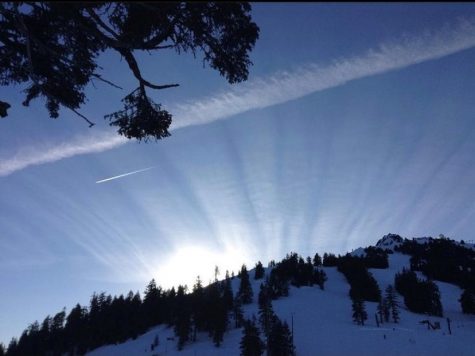Exploring Fall Traditions
On November 28, most families in the United States will gather around a table with their loved ones, sharing a feast prepared for a night of gratitude and love. In America, fall is a time commonly known for spooks and scares in October and stuffing our bellies in November while leaves transform their colors throughout the season. As the United States partakes in nation-specific holidays, other countries around the world do so as well throughout their fall seasons. Here are some of those traditions and holidays from other cultures:
On our first stop, we go to the land of hockey, maple syrup, and brutal winters…Canada! In the second Monday in October, Canada celebrates its harvest and blessings from the past year with families and friends joined together. Canadian Thanksgiving’s date has moved about the months for years, but in 1957, the Governor-General of Canada stated that the new date would be the second Monday in October to line up with the end of their harvest and before the bitter cold. The Thanksgiving meals prepared are made from foods native to the New World, as (according to tradition) the Pilgrims adopted these foods or were taught how to grow and cook them from the Native Americans before them.
Next, travel to one of the biggest economies in the world with its technology wired culture, Korea. Chuseok (chu-saw) is a day for Koreans to travel back to their hometowns to spend three days with their family and friends as well as visit ancestral graves and honor the dead. The days Chuseok is celebrated change every year as the day is determined by the lunar calendar. The beginning of this three-day harvest festival falls on the 14th day of the 8th lunar month, allowing the celebration to start with the rains of autumn bringing new harvests. The Korean harvest season brings family and friends together and encourages giving thanks to their ancestors while enjoying a great feast from local harvests.
Surrounded by vibrant colors, temples, spices, and festivals, find yourself in the land of India, where beauty is always just around the corner. Diwali is India’s most important and widely celebrated holiday of their year, however, it is also celebrated throughout Fiji, Guyana, Malaysia, Mauritius, Myanmar, Nepal, Singapore, Sri Lanka, Suriname, Trinidad and Tobago. This festival of lights is used to symbolize the inner light that protects from spiritual darkness and to dispel the darkness of our ignorance. This holiday is celebrated by Hindus, Sikhs, Jains, and Newar Buddhists, through a five-day festival with the most important day coinciding with the new moon of the month of Kartika (October), on the Hindu calendar. In northern India, they celebrate the story of King Rama’s return to Ayodhya (a legendary city) after he defeated Ravana (a 10 headed demon) by lighting rows of clay lamps. Southern India celebrates Lord Krishna’s defeat of the demon Narakasua, while in western India, the festival marks the day that Lord Vishnu the Preserver, (one of the most prominent gods of the Hindu trinity) sent demon King Bali to rule the nether world. Although each culture has different histories surrounding Diwali, all cultures use this festival as a time to celebrate the triumph of good over evil.
Walk through the powerful waterfalls and wade in the bright blue water on the Gulf of Thailand, and you can experience Loi Krathong. This Siamese festival is enjoyed throughout the Kingdom of Thailand and in nearby countries with significant southwestern Tai cultures. Loi Krathong, translating to “to float a basket” is a time where thousands of candle-lit banana leaf boats known as Krathongs, are released in waterways to symbolize new beginnings. This festival is celebrated annually on the full moon of the 12th month of the Thai lunar calendar for three days, which typically falls in November. This is also a time for families to join in unison and appreciate one another while feasting with their communities, making stronger connections. Those that participate in Loi Krathong make a wish as they release their banana lit basket down the waterway to symbolize renewal for the new year.



